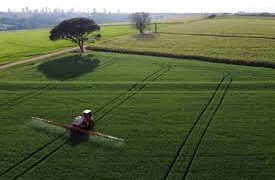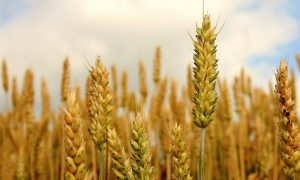59% winter rain deficit in Haryana, farmers fear dip in wheat yield

Farmers in Haryana fear wheat yield losses due to a 60% rainfall deficit and unusually high temperatures. IMD data shows Haryana received only 11.1 mm of rain from Jan 1 to Feb 20, well below the normal 27.2 mm. Experts urge efficient irrigation and climate-smart farming to mitigate risks, with rain expected from Feb 24.
Gurgaon: Nearly 60% rainfall deficit and unusually warm temperatures have cast a shadow over winter crops with farmers in the breadbasket fearing a sharp dip in wheat yield in the coming days.India Meteorological Department (IMD) data shows Haryana received only 11.1 mm of rainfall between Jan 1 and Feb 20, significantly lower than the normal 27.2 mm, which is a 59% deficit.The average rainfall for the two winter months in 2024 was 13.6 mm—also a 50% deficit—when Haryana produced approximately 11,876 thousand tons of wheat. In 2023, the state’s total wheat production was around 10,500 thousand tons, but winter rain (Jan-Feb) was 12.4 mm. Not just wheat, farmers in the region also grow cereals (barley), oilseeds (mustard), and vegetables (cauliflower, cabbage and peas) that require low temperatures and adequate moisture.Tej Maan, who cultivates six acres of wheat in Hisar, told TOI: “Day temperature is higher than usual and rain is scant. This is not conducive to wheat production. In my farm, wheat production is likely to be affected by 40-50%.” Last year, Maan produced around 80 quintals (8 tons) of wheat.
According to the IMD data, Kaithal, in northwest Haryana, received the least rain in the corresponding period—3.3 mm against a normal of 30.7 mm, an 89% deficit. It was followed by Karnal, about 150km north of Gurgaon, which received 5.7 mm of rainfall, which is 87% below the normal of 43.1 mm. At 20.2 mm, Gurgaon saw 9% deficit rain against a normal of 22.1 mm. Faridabad got 16.2 mm of rainfall, 36% below the normal 25.1 mm. Palwal received 11.3 mm of rainfall, 33% below the normal 16.7 mm.Dr Indu K Murthy, the sector head of climate, environment and sustainability at think-tank Centre for Study of Science, Technology and Policy (CSTEP), said to mitigate immediate risks, short-term measures, like efficient irrigation, rainwater harvesting and real-time weather advisories, can be adopted.”Long-term resilience, however, requires large-scale groundwater recharge, sustainable cropping patterns, and policies promoting climate-smart agriculture. A shift towards less water-intensive crops and improved water governance is essential to secure Haryana’s future against climate uncertainties,” Murthy said.Farmers may expect some relief as IMD predicts a brewing weather disturbance that is expected to bring rain to northwest India from Feb 24.
To read more about Wheat News continue reading Agriinsite.com
Source : The Times Of India

















